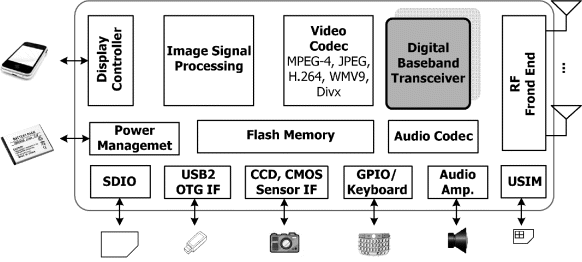Chapter 1
Introduction
The pursuance of better ways of living has been instrumental in advancing human civilization. Communication services available at any time and place free people from the limitation of being attached to fixed devices. Nowadays, thanks to remarkable progress in wireless technology, affordable wireless communication service has become a reality. Mobile phones hook people up whenever and wherever they want. Digital audio and video broadcasting offers consumers high-resolution, better-quality, and even interactive programs. The devices are now thin, light, small, and inexpensive. Recently, smart phones capable of running multimedia and broadband applications have gained popularity and now account for a large share of the worldwide mobile phone sales. As shown in Figure 1.1, the digital baseband transceiver is an essential piece of such smart phones.
Figure 1.1 System diagram of a smart phone-like device.

Several projects studying future wireless networks with different extents of coverage are ...

